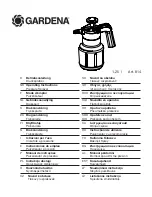
ESH150
–3PE~400V
Service manual
46/56
Ref. NR-000144-ENG
Hydraulic drive
WARNING!
Before attempting to fix any kind of malfunction, make sure that no lights
are lit on the control panel, the power switch is set to the OFF position, and the unit is
disconnected from the power supply.
Never open the electrical console when the unit is
connected to the power supply.
The hydraulic motor operates under pressure. Do not
release any connection or perform repair or maintenance work on components subjected
to pressure until all pressures have been eliminated.
Follow the procedure below, in the sequence given, to rectify the problem and avoid expensive
repairs. Check that all automatic switches are in the correct working position before proceeding
to locate faults.
PROBLEMS
SOLUTIONS
The electric motor does not start or stops during operation.
1
The hydraulic pump delivers no pressure.
2
Little or no pressure, with chirps.
2-3
SOLUTIONS
1.
Automatic switch
The electric motor is protected by an automatic safety switch which trips when too much current
is delivered to the motor. Disconnect the unit from the power supply and allow the motor to cool
down. Open the control panel and re-prime the automatic switch. The motor should now work
normally. If too much current is being delivered to the motor it is important to identify why this is
happening, for in the event of failure by the automatic switch the electric motor may be
damaged by overheating.
2.
Little or no pressure
The most likely cause of lack of pressure is that the hydraulic pump is not delivering enough
pressure due to mis-priming, caused by a lack of oil or a clogged intake filter. Check these
points to ensure correct operation.
3.
Noise
A chirping noise is a common symptom of cavitation. This noise is normal upon power-up and
normally disappears after about thirty seconds.
If the chirping continues, stop the unit to protect the hydraulic pump and check that the hose
couplings are properly tightened and that the pump is correctly primed. Remove the pump drain
coupler and fill the pump if necessary.
Another cause of pump noise is excessive temperature of the hydraulic oil. Make sure the oil is
being delivered in the correct quantity, and if necessary, improve ventilation to allow greater
dissipation of heat from the hydraulic tank.











































